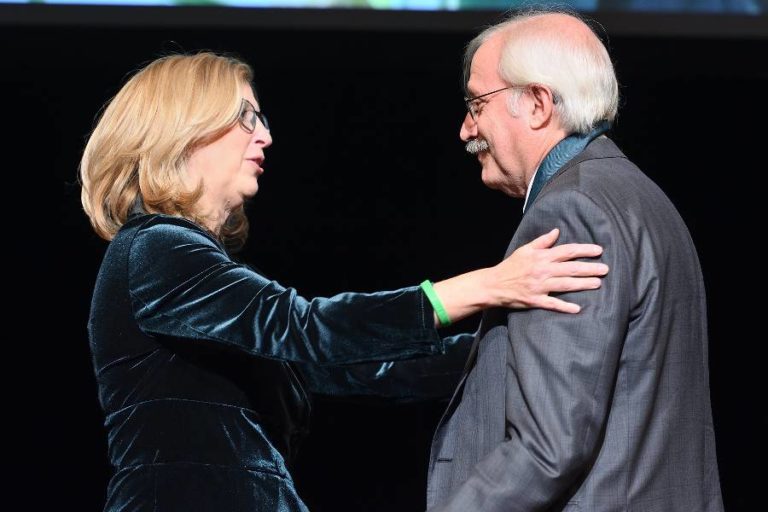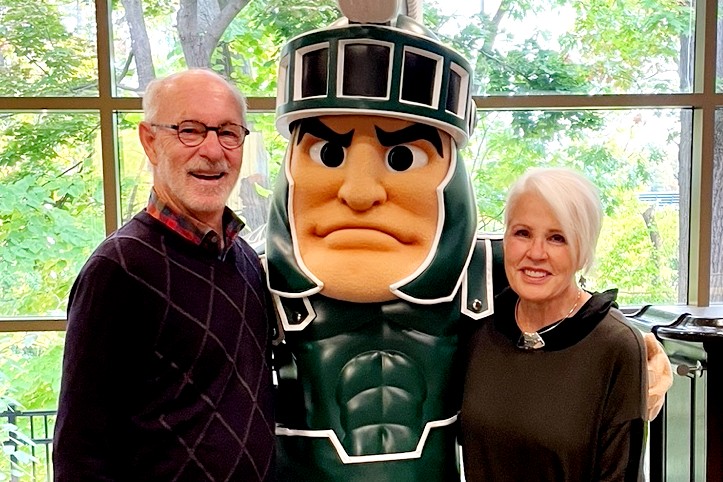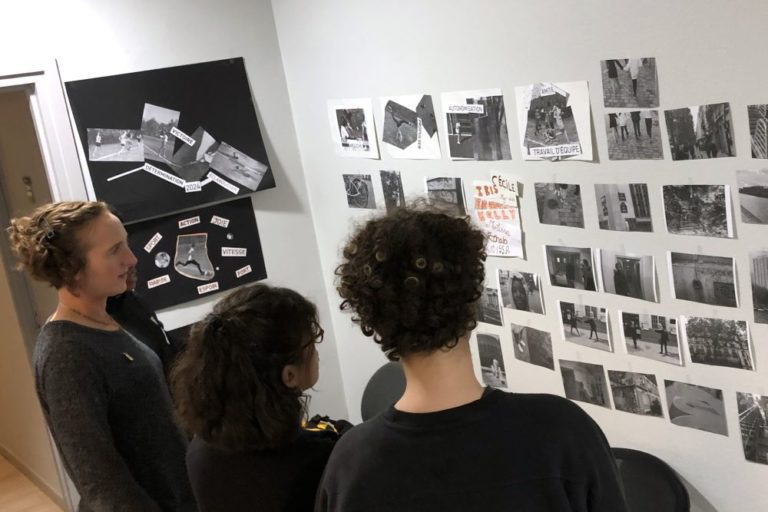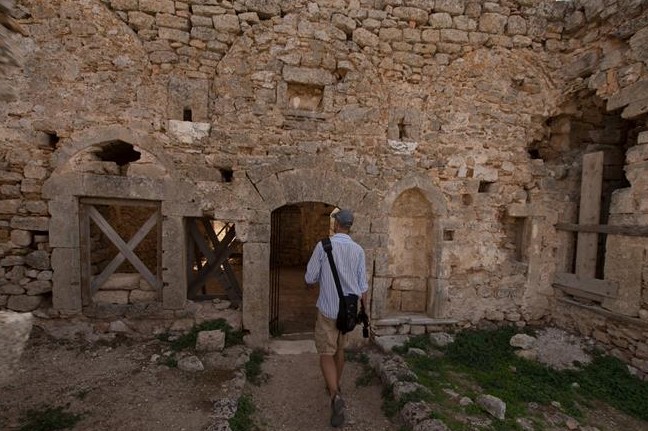
Jon Frey first encountered archaeology at the site of Isthmia in Greece in 1993 as a study abroad student. He has since returned almost every year to the same ancient excavation. Now a classical archaeologist and Associate Professor of Classical Studies in the Department of Art, Art History, and Design at MSU, Frey will oversee the dig near Corinth, Greece, where he first got his start.
The American School of Classical Studies at Athens recently approved the transfer of directorship of the Isthmia Excavations to Michigan State University under Frey’s leadership. He takes the reigns from Dr. Timothy Gregory and The Ohio State University, which has led the project since 1987.
Situated between Athens and Corinth, the site of Isthmia was active as early as 700 B.C. with some parts in use through the Middle Ages. Dedicated to the worship of Poseidon, it is one of four Panhellenic sanctuaries where athletic games, drama and poetry competitions, and religious festivals took place.
The site was largely forgotten until 1952, when the University of Chicago began excavation of the sanctuary. In 1967, the University of California Los Angeles assumed sponsorship of the project. Michigan State University faculty and students have worked at the site alongside colleagues from Ohio State since 2008.
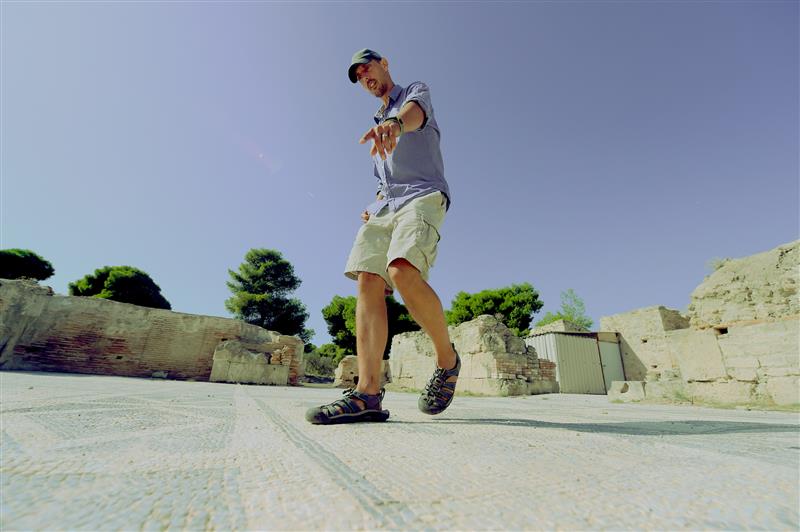
“It’s a rare opportunity for a Big Ten school in the Midwest to sponsor an archaeological project on this scale,” Frey said. “What’s cool, too, is that the Isthmia dig has been closely associated with undergraduate study abroad programs when most others of this type are restricted to professional archaeologists or graduate students.”
Digging the Digital
The Isthmia dig, Frey explained, isn’t a dig anymore in the traditional sense. A lot of contemporary archaeological work is done using cameras, drones, and computers, rather than picks and shovels. Instead of hand-drawn plans, GPS is used to keep track of locations, gathering information to create 3D models and maps. Notes are taken on laptops instead of written in handheld notebooks or paper index cards. Digital photographs are viewable immediately instead of waiting for black-and-white negatives and prints.
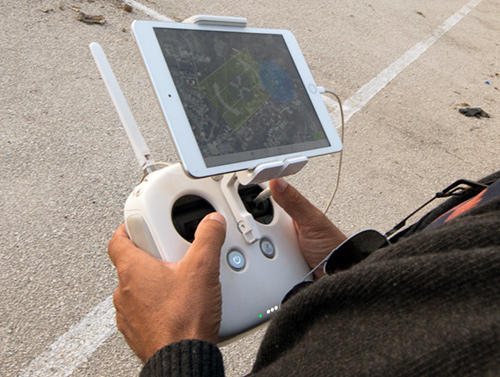
While archaeologists still travel to the Isthmia site, most don’t get down in the trenches, but rather stay above ground to “excavate” and digitize the objects and records in archives from excavations that took place decades in the past.
“We’re still discovering things, just in a different way,” Frey said. “For instance, I came across a 1967 notebook where the archaeologist recorded ‘I found a pot and a coin,’ ‘Martial Law was declared in Athens,’ and ‘It rained today.’ So you got archaeology, political history, and meteorology all in one.”

In his new role, Frey will oversee ongoing work, discoveries, and some test excavations in central and outlying areas of Isthmia. His main focus, though, will be archiving and publishing results recorded in the past 60 or more years.
“We’ve branded this as excavating the archives,” Frey said. “Instead of grabbing a shovel and a pick and digging, we’re going back through the archives to see what didn’t get reported on decades ago.”
Democratizing Results
Frey has been digitizing and posting material online for about 10 years with the assistance of MSU’s MATRIX Center for Digital Humanities and Social Science. In his new leadership role, he will accelerate the study and digitization of notes, photographs, field books, and descriptions of artifacts held in remote on-site storage at Isthmia. More importantly, Frey’s team will synthesize and publish the decades-old results, creating cultural and natural resources available to anyone.
What’s great about digital archaeology is that we have the potential to open up our findings to a wider audience. It’s always been archaeologists talking to archaeologists, or people seeing things on The Discovery Channel. Now, the public can actually see raw information and data online and gain a more in-depth understanding of the past.
Jon Frey, Associate Professor of Classical Studies
“What’s great about digital archaeology is that we have the potential to open up our findings to a wider audience,” Frey said. “It’s always been archaeologists talking to archaeologists, or people seeing things on The Discovery Channel. Now, the public can actually see raw information and data online and gain a more in-depth understanding of the past.”
Alumnus Sean Davis participated in the Isthmian dig in 2014 as part of a study abroad program for his art history and visual culture degree. Today, he’s a development coordinator in University Advancement for MSU’s Eli and Edyth Broad Art Museum.
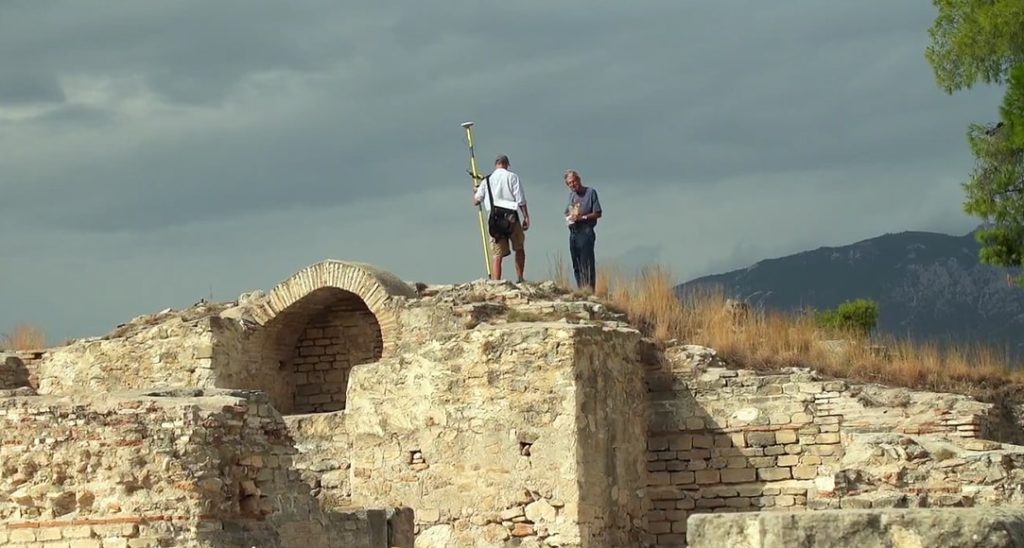
Davis admits that while he didn’t get the romanticized version of “going into the trenches,” he did get to see some actual artifacts from the Isthmia dig house. He also saw notes from archaeological logs, viewed film and prints of objects, and participated in scanning and digitizing records.
“It definitely gave me an appreciation for the amount of work and effort that goes in on the backend for finding, restoring, and preserving art,” Davis said. “The experience helped me define my career path and to find a way to work in the arts while retaining my interest in art history.”
To learn more about Jon Frey and the Isthmia dig, visit jonmfrey.com.
